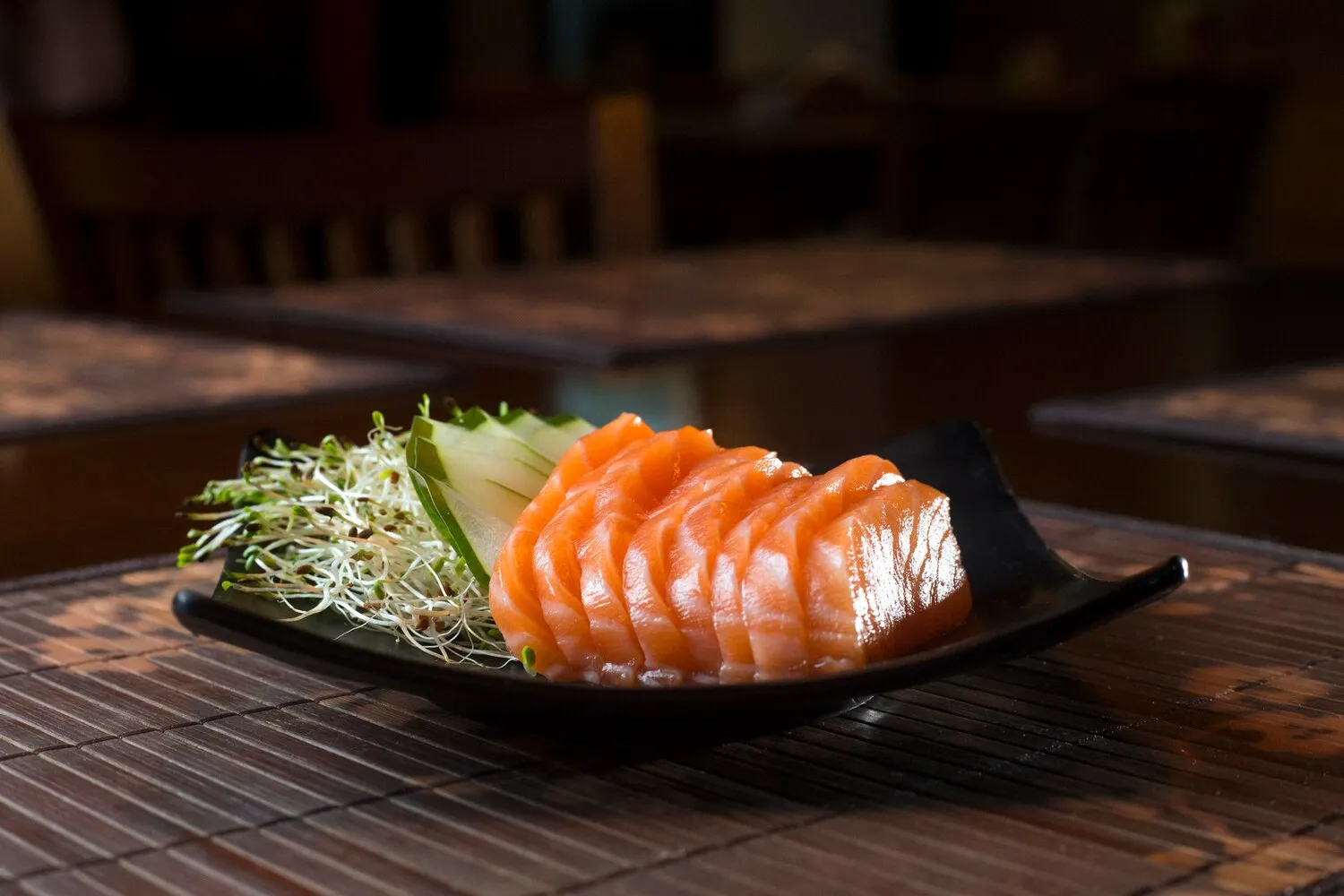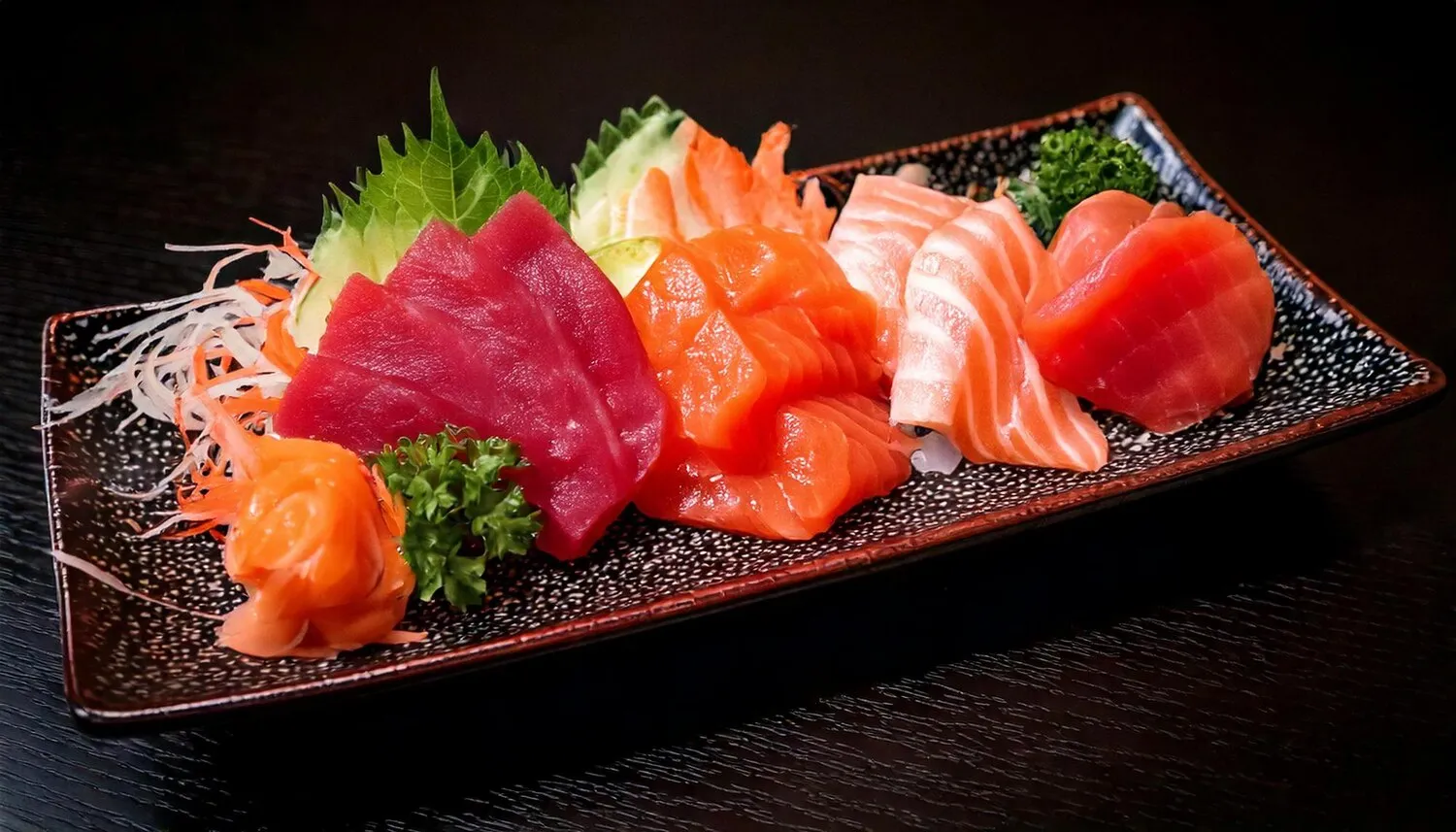
Sashimi Salmão
Salmon sashimi.
Nutrition Facts
* The % Daily Value (DV) tells you how much a nutrient in a serving of food contributes to a daily diet. 2,000 calories a day is used for general nutrition advice.
New City Sushi - Bar e Restaurante
Sashimi, the art of thinly sliced raw fish, has deep roots in Japanese culinary history. Initially, fish was consumed raw as a way to test its freshness before refrigeration was common. Over time, the techniques for preparing and presenting sashimi evolved, becoming a refined and highly respected art form. Salmon, while not traditionally the most common fish used historically, has become a very popular choice in modern Sashimi.
Sashimi, including Salmon Sashimi, is deeply embedded in Japanese culture, representing freshness, quality, and artistry. It is often enjoyed on special occasions and is considered a symbol of respect for the ingredients.
Presentation
The presentation of Sashimi is extremely important. It is meticulously arranged to showcase the natural beauty of the fish and to create an appealing visual experience. The art of Mukozuke, is central to presentation.
Freshness is Paramount
Freshness is absolutely critical for Sashimi. Only the highest quality, freshest fish is used to ensure both safety and optimal flavor. The fish must be handled with utmost care to prevent spoilage.
Respect for the Ingredient
Eating Sashimi is a sign of respect for the fish and the effort that went into sourcing and preparing it. It is a way to appreciate the natural flavors of the sea.
The dominant flavor of Salmon Sashimi is the pure, clean taste of the salmon itself. Subtle umami and fatty richness are key characteristics, complemented by carefully chosen accompaniments.
The primary flavor is the fresh, clean, and slightly sweet taste of high-quality salmon. It possesses a rich, buttery texture that melts in the mouth. The flavor is enhanced by the dipping sauce, typically soy sauce (shoyu), which adds a salty, savory dimension. Wasabi provides a pungent, spicy kick, and the pickled ginger (gari) offers a refreshing, palate-cleansing element.
Sourcing High-Quality Salmon
Choose sushi-grade salmon from a reputable fishmonger or supplier. Look for vibrant color, a firm texture, and a fresh, clean smell. Farmed Atlantic Salmon and Wild Alaskan Salmon are popular choices.
Proper Cutting Technique
Use a very sharp knife, ideally a Yanagiba (sashimi knife), to slice the salmon against the grain. This ensures a tender texture. The slices should be uniform in thickness, typically around ¼ inch thick.
Serving Temperature
Sashimi is best served chilled. Keep the salmon refrigerated until just before serving to maintain its freshness and optimal texture.
Soy Sauce Etiquette
Avoid soaking the Sashimi in soy sauce. Dip it lightly to enhance the flavor without overpowering it. The soy sauce is there to complement, not mask, the delicate flavor of the fish.
Explore additional Sashimi dishes and restaurants
Explore SashimiDiscover top dining spots and culinary experiences in Ananindeua.
Explore AnanindeuaLearn more about the food culture, restaurant scene, and culinary heritage of Brazil.
Explore Brazil
